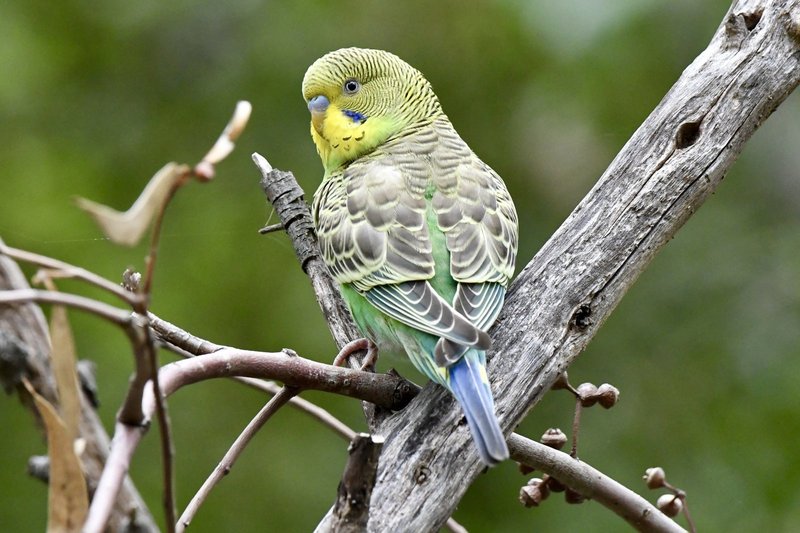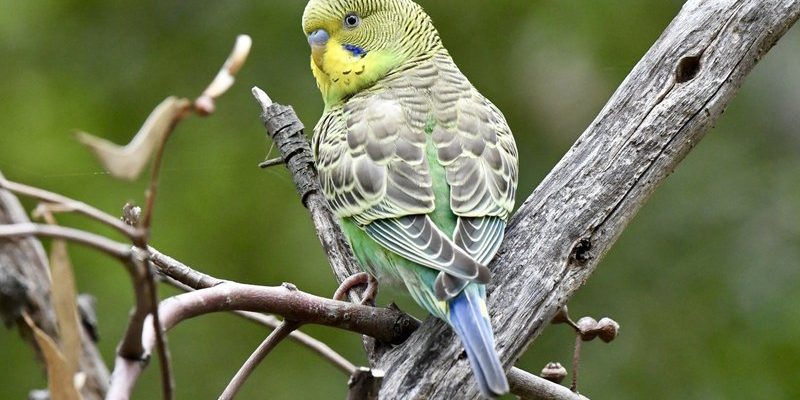
Budgies are native to Australia, but their range extends beyond that sunburnt land down under. You might be wondering, “Where exactly can I find these colorful birds?” Let’s break it down together over a cup of coffee and explore the global spots where budgies make their homes.
Australia: The Budgie’s Native Land
Australia is the heart and soul of the budgie. They thrive in the arid interior, where the landscape is dotted with beautiful eucalyptus trees and open grasslands. Think of it as their playground; here, they find the seeds they love to munch on and plenty of space to fly.
Most budgies are found in flocks, and they prefer habitats that provide a mix of open ground for foraging and trees for shelter. In the wild, you might spot them swooping down to the ground, filling the air with their cheerful chatter. You’ll often see them near water sources, which are vital for their survival, especially in the dry Australian climate.
If you’re planning a trip to Australia and want to see budgies in their natural habitat, head to the bushlands or the arid outback regions. It’s a fascinating experience to watch them interact, especially in the early morning when they gather to feed.
Urban Areas: Budgies in Suburbia
Surprisingly, budgies have adapted well to urban environments. You might be thinking, “Can I really find them in the city?” The answer is yes! In many Australian cities, budgies often visit parks and gardens, seeking out food sources like seeds and fruits.
In urban settings, they usually prefer areas with ample greenery. Look for them flitting around in public parks, bird sanctuaries, or even schoolyards. Parks with nearby trees or bushy areas are ideal spots for spotting these playful birds. Plus, their bright colors really stand out against the green surroundings, making them a delightful sight.
As they navigate city life, budgies tend to form small flocks. This social nature helps them thrive even amidst the hustle and bustle of urban living. You might find yourself stopping in your tracks, just to enjoy the sight of a group of budgies enjoying a sunbeam!
New Zealand: A Budgie’s Vacation Spot
While budgies are native to Australia, they’ve made a splash across the Tasman Sea in New Zealand. Although they aren’t as commonly seen here, they can sometimes be spotted in rural areas or gardens, where pet owners may have let them roam free.
New Zealand’s rich agricultural land provides a suitable habitat for these birds. You might find them munching on seeds around farmlands or in regions with native bush. The fact that they can adapt to different environments is one of the things that makes budgies fascinating.
If you’re an avid birdwatcher heading to New Zealand, keep an eye out for these colorful visitors, especially in locations where they’ve been released or have found a suitable habitat. Just imagine encountering a budgie amidst the stunning backdrop of New Zealand’s landscapes!
Other Countries: The Budgie’s Global Journey
Budgies have traveled far and wide from their original Australian habitat. Due to their popularity as pets, they’ve established small populations in various countries, including the UK, the US, and parts of Europe. These charming birds are often found in public parks, gardens, and even in the wild when they manage to escape captivity.
In the UK, for example, flocks of budgies can sometimes be seen in parks, especially during warmer months. Here, they mingle with other bird species, adding a splash of color to the scenery. Their resilience and adaptability are impressive; they’ve learned to thrive even in less-than-favorable conditions.
Spotting budgies in places outside their native range can be a fun little challenge. Take a walk in local parks, and keep an ear out for their distinctive chirping. You never know—you might catch a glimpse of a budgie taking a break from its usual routine.
Conservation and Habitat Loss
While it’s exciting to think about spotting budgies all over the world, their natural habitats face challenges. Urbanization, agriculture, and climate change threaten the environments they rely on. Protecting these spaces is crucial for the survival of wild budgie populations.
Conservation efforts focus on preserving their natural habitats, ensuring that these birds have places to thrive while educating the public about their importance. As enthusiasts, being aware of these issues helps us appreciate the beauty of budgies even more.
If you’re a birdwatcher or just a nature lover, consider supporting local conservation efforts. These organizations work tirelessly to protect habitats and educate communities about the importance of safeguarding our wildlife, ensuring future generations can enjoy the sight of budgies soaring through the skies.
How to Attract Budgies to Your Backyard
If you’d love to see budgies up close, why not create a welcoming space in your backyard? You don’t need a lot of space to make your garden appealing. Here are some simple tips to attract these adorable birds:
- Provide Food: Budgies love seeds, especially millet. Scatter birdseed in your garden to entice them.
- Plant Native Flowers: Adding native plants to your garden can attract insects and seeds, providing food for budgies.
- Install Birdbaths: Ensure there’s a source of fresh water. Budgies need to drink and bathe.
- Limit Pesticides: Keeping your garden pesticide-free makes it safer for birds and other wildlife.
Creating a friendly environment not only benefits budgies but also adds life to your garden. Imagine watching these colorful birds stop by while you sip your morning coffee—what a joy!
Spotting budgies in their natural habitats is more accessible than you might think. From the sunburnt plains of Australia to green backyards around the world, these cheerful little birds have carved out a niche in many places. Whether you’re planning a trip to Australia or cultivating a friendly garden in your backyard, there are numerous opportunities to encounter these charming creatures.
As you embark on your journey to observe budgies, remember to appreciate their beauty and the environments they inhabit. Protecting their habitats ensures that future generations can also enjoy these delightful birds. So grab your binoculars and head outside—who knows what feathered friends you might find next?

